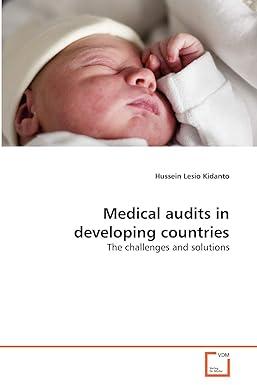Question
Mart, Inc., is a public company whose shares are traded in the over-the-counter market. At December 31, Year 2, Mart had 6 million authorized shares
Mart, Inc., is a public company whose shares are traded in the over-the-counter market. At December 31, Year 2, Mart had 6 million authorized shares of $5 par-value common stock, 2 million shares of which were issued and outstanding. The equity accounts at December 31, Year 2, had the following balances:
| Common stock | $10,000,000 |
| Additional paid-in capital | 7,500,000 |
| Retained earnings | 3,250,000 |
Transactions during Year 3 and other information relating to Marts equity accounts were as follows:
- On January 5, Year 3, Mart issued 100,000 shares of $50 par-value, 9% cumulative, convertible preferred stock at $54 per share. Each share of preferred stock is convertible, at the option of the holder, into two shares of common stock. Mart had 250,000 authorized shares of preferred stock. The preferred stock has a liquidation value of $55 per share.
- On February 1, Year 3, Mart reacquired 20,000 shares of its common stock for $16 per share. Mart uses the cost method to account for treasury stock.
- On March 15, Year 3, Mart paid $200,000 for 10,000 shares of common stock of Lew, Inc., a public company whose stock is traded on a national stock exchange. This stock was 1% of the outstanding common stock of Lew. It was acquired for long-term investment purposes and had a fair value of $15 per share on December 31, Year 3. This decline in fair value was not due to credit losses.
- On April 30, Year 3, Mart had completed an additional public offering of 500,000 shares of its $5 par-value common stock. The stock was sold to the public at $12 per share, net of offering costs.
- On June 17, Year 3, Mart declared a cash dividend of $1 per share of common stock, payable on July 10, Year 3, to shareholders of record on July 1, Year 3.
- On November 6, Year 3, Mart sold 10,000 shares of treasury stock for $21 per share.
- On December 7, Year 3, Mart declared the yearly cash dividend on preferred stock, payable on January 7, Year 4, to shareholders of record on December 31, Year 3.
- On January 17, Year 4, before the books were closed for Year 3, Mart became aware that the ending inventories at December 31, Year 2, were overstated by $200,000. The tax rate applicable to Year 2 net income was 30%. The appropriate correcting entry was recorded the same day.
- After correction of the beginning inventories, net income for Year 3 was $2,250,000.
Enter the amounts to be reported on Marts statement of retained earnings for the year ended December 31, Year 3, in the associated cells below. Indicate reductions to retained earnings with a leading minus (-) sign.
Mart, Inc. Statement of Retained Earnings For the Year Ended December 31, Year 3
| Balance on December 31, Year 2 | ||
| As originally reported | ||
| Prior-period adjustment from error overstating inventories at December 31, Year 2 | ||
| Income tax effect | ||
| Net income for Year 3 | ||
| Cash dividends on | ||
| Preferred stock | ||
| Common stock | ||
| Balance on December 31, Year 3 |
Step by Step Solution
There are 3 Steps involved in it
Step: 1

Get Instant Access to Expert-Tailored Solutions
See step-by-step solutions with expert insights and AI powered tools for academic success
Step: 2

Step: 3

Ace Your Homework with AI
Get the answers you need in no time with our AI-driven, step-by-step assistance
Get Started


